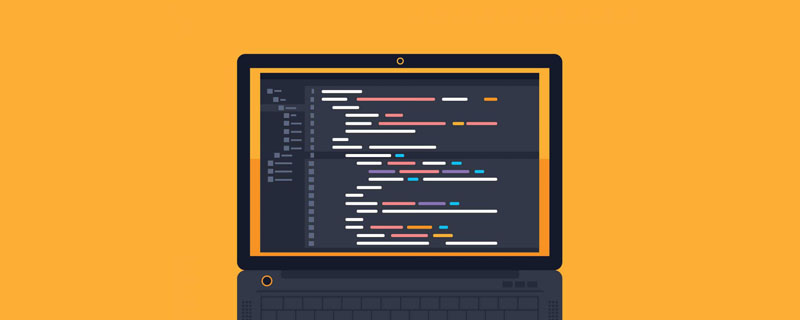Phrasal elements like can improve document structure while retaining the intended visual style. But is not very common in daily applications. The first impression is whether Taobao UED has neglected this small issue?
Regarding , the results of online searches are also fragmented. Some say that it is not recommended to use, and some do not mention its name in the abandoned tags. Fortunately, this is explained in detail in the book "Mastering HTML Semantics, Standards and Styles".
, like
<sup><sub><i><b> and other brothers, are defined as presentational elements. The W3C says: To be able to simply Element that specifies font information, no semantics. For example: <b> tag, there is no doubt that it should be replaced with <em> or <strong>; but <i> tag, it is difficult to directly express it when you want to italicize a foreign text in the page (the convention of foreign language display) There is nothing wrong with using it, because when the user uses <span class="">...</span> to express a paragraph in italics, it takes up much more space than the former. <br><br>As for the more complex <big><small>, the author of the book, Paul Haine, did not give a clear answer. Theoretically, they are purely presentational elements and should be removed using CSS. replace them. But some heavyweight in the industry (Joe Clark) recommends using them to achieve "weighted by importance" visuals. The result of the discussion is: there are gains and losses, and specific issues need to be analyzed in detail. <br><br>Back to this piece of code on Taobao, within the <small></small> tag is a link to skip navigation: <a class="invisible" href="#Content">Skip navigation and toolbar</a>. I think Taobao UED adopted the same idea as the <i> tag after thinking about it. Instead of defining a <span class="skipNavigation"></span> that takes up a lot of html space, it is better to use <small> directly. The more important point is that the skip navigation function is for users, to be precise, it is for disabled users when using a read-aloud browser or without css style definition. The concise <small></small> may be more in line with standardization. spirit. <br><br>The only doubt is that the <small> under css streaking is indeed the following one-size font, showing its original meaning of non-importance. But for blind users, does changing <small></small> to <strong></strong> optimize the user experience for reading-aloud browsers? <br></small></small></i></small></big></i></strong></em></b></b></i></sub></sup>
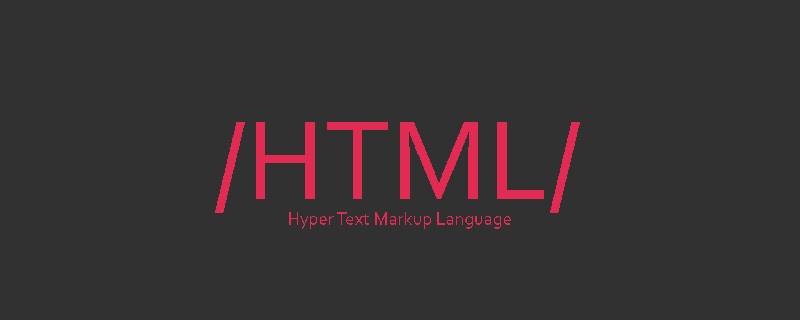 HTML超文本标记语言--超在那里?(文档分析)Aug 02, 2022 pm 06:04 PM
HTML超文本标记语言--超在那里?(文档分析)Aug 02, 2022 pm 06:04 PM本篇文章带大家了解一下HTML(超文本标记语言),介绍一下HTML的本质,HTML文档的结构、HTML文档的基本标签和图像标签、列表、表格标签、媒体元素、表单,希望对大家有所帮助!
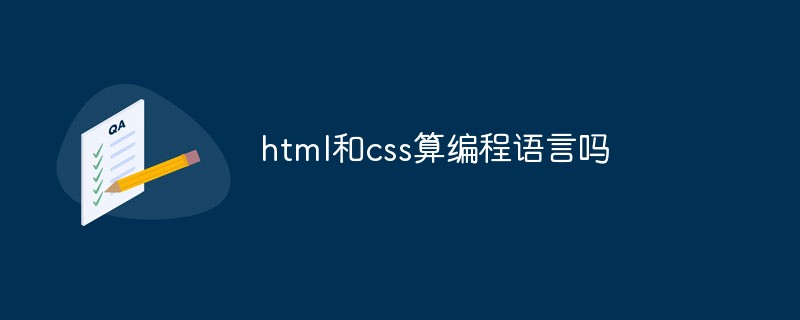 html和css算编程语言吗Sep 21, 2022 pm 04:09 PM
html和css算编程语言吗Sep 21, 2022 pm 04:09 PM不算。html是一种用来告知浏览器如何组织页面的标记语言,而CSS是一种用来表现HTML或XML等文件样式的样式设计语言;html和css不具备很强的逻辑性和流程控制功能,缺乏灵活性,且html和css不能按照人类的设计对一件工作进行重复的循环,直至得到让人类满意的答案。
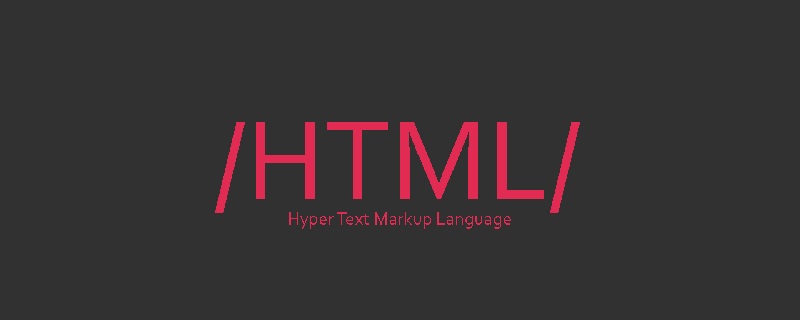 web前端笔试题库之HTML篇Apr 21, 2022 am 11:56 AM
web前端笔试题库之HTML篇Apr 21, 2022 am 11:56 AM总结了一些web前端面试(笔试)题分享给大家,本篇文章就先给大家分享HTML部分的笔试题(附答案),大家可以自己做做,看看能答对几个!
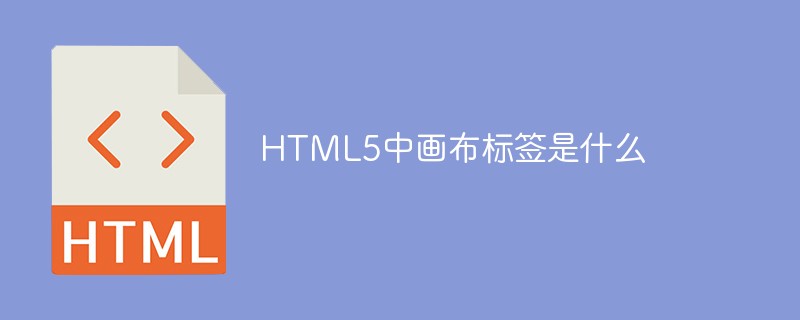 HTML5中画布标签是什么May 18, 2022 pm 04:55 PM
HTML5中画布标签是什么May 18, 2022 pm 04:55 PMHTML5中画布标签是“<canvas>”。canvas标签用于图形的绘制,它只是一个矩形的图形容器,绘制图形必须通过脚本(通常是JavaScript)来完成;开发者可利用多种js方法来在canvas中绘制路径、盒、圆、字符以及添加图像等。
 html中document是什么Jun 17, 2022 pm 04:18 PM
html中document是什么Jun 17, 2022 pm 04:18 PM在html中,document是文档对象的意思,代表浏览器窗口的文档;document对象是window对象的子对象,所以可通过“window.document”属性对其进行访问,每个载入浏览器的HTML文档都会成为Document对象。
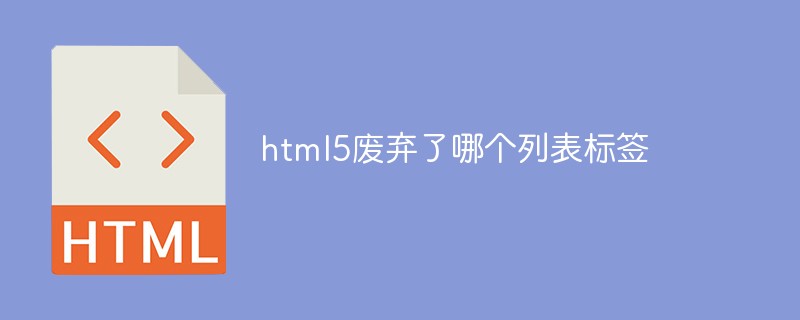 html5废弃了哪个列表标签Jun 01, 2022 pm 06:32 PM
html5废弃了哪个列表标签Jun 01, 2022 pm 06:32 PMhtml5废弃了dir列表标签。dir标签被用来定义目录列表,一般和li标签配合使用,在dir标签对中通过li标签来设置列表项,语法“<dir><li>列表项值</li>...</dir>”。HTML5已经不支持dir,可使用ul标签取代。
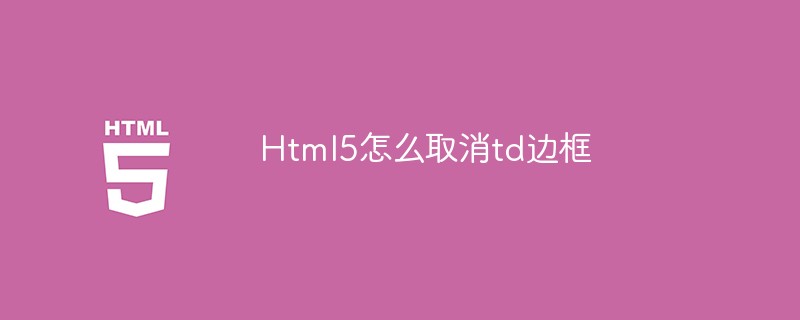 Html5怎么取消td边框May 18, 2022 pm 06:57 PM
Html5怎么取消td边框May 18, 2022 pm 06:57 PM3种取消方法:1、给td元素添加“border:none”无边框样式即可,语法“td{border:none}”。2、给td元素添加“border:0”样式,语法“td{border:0;}”,将td边框的宽度设置为0即可。3、给td元素添加“border:transparent”样式,语法“td{border:transparent;}”,将td边框的颜色设置为透明即可。


Hot AI Tools

Undresser.AI Undress
AI-powered app for creating realistic nude photos

AI Clothes Remover
Online AI tool for removing clothes from photos.

Undress AI Tool
Undress images for free

Clothoff.io
AI clothes remover

AI Hentai Generator
Generate AI Hentai for free.

Hot Article

Hot Tools

Zend Studio 13.0.1
Powerful PHP integrated development environment

SublimeText3 English version
Recommended: Win version, supports code prompts!

Dreamweaver Mac version
Visual web development tools

ZendStudio 13.5.1 Mac
Powerful PHP integrated development environment

Dreamweaver CS6
Visual web development tools




